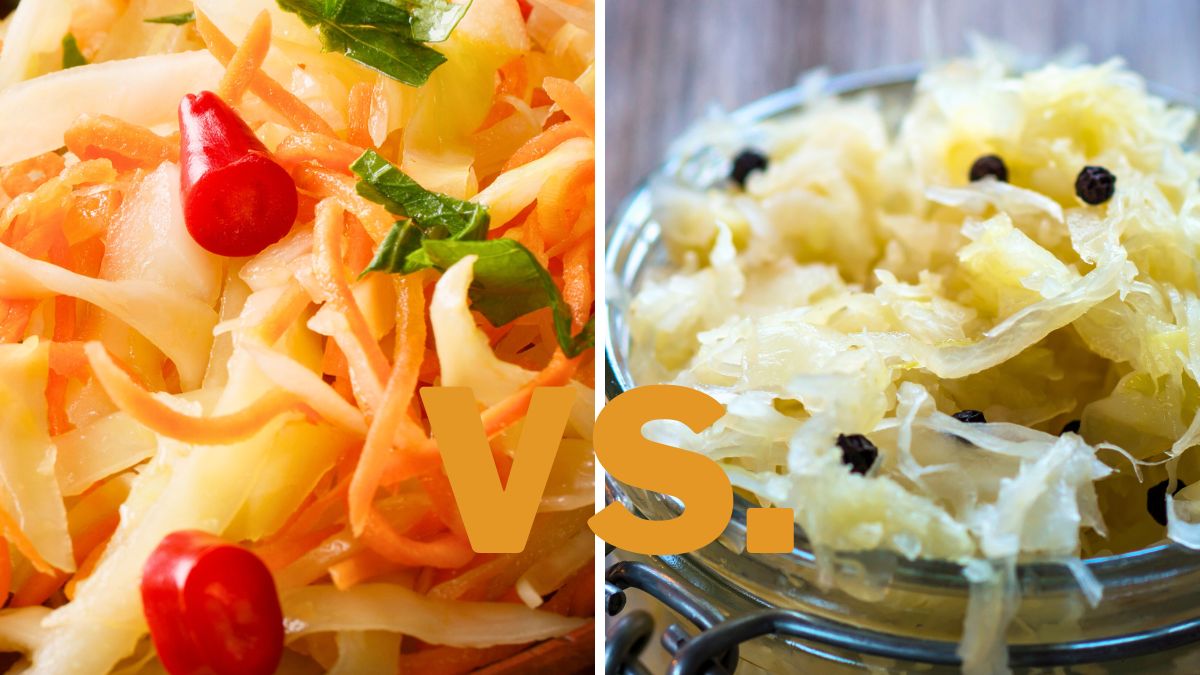Curtido vs. Sauerkraut: What Are the Differences?

Curtido and sauerkraut are often part of my winter meals, and I genuinely enjoy making them. I love pairing them up with a fatty roast for my loved ones, but they don’t seem to see the difference between curtido and sauerkraut.
I take differences between similar foods very seriously because I appreciate the uniqueness of different cuisines. Even though these two have similar tastes, they deserve to be recognized and celebrated for their differences since they are representations of two very different cultures. So, in this article, I will tell you all about curtido and sauerkraut, their differences and similarities.
Are Curtido and Sauerkrat the Same Dish?
The short answer is no; sauerkraut and curtido aren’t the same dish. Although fermented cabbage is the base ingredient for both, the making process and the additional ingredients make these dishes different and unique.
Take a closer look at the differences between curtido and sauerkraut below.
Curtido and Sauerkraut Use Different Ingredients
Curtido is a Latin American dish made from cabbage as the main ingredient, but it often includes other ingredients like carrots, onions, oregano, jalapenos, or chili peppers. The ingredients are typically shredded and then marinated in a mixture of vinegar, water, and salt. You can also grate them or chop them, but make sure they are really thin so that they take in the marinade.
Sauerkraut, on the other hand, is a fermented cabbage dish made by thinly slicing cabbage and fermenting it with salt. The cabbage ferments on its own, thanks to the bacteria that develop during the process, so you don’t add anything other than salt. Sauerkraut is typically only cabbage, and it doesn’t include any other veggies or spices.
I’ve experimented and tried to add other veggies, pickles to be more precise, as well as bay leaf, and it turned out tasty, but I still prefer the original version.
They Come from Different Parts of the World
Curtido originates from El Salvador and is a staple condiment in Salvadoran cuisine. Still, it has spread throughout the continent, so you can find it in many Latin American restaurants that serve more traditional food. To be honest, I have never ordered it at a restaurant, but I do enjoy making it at home following the traditional recipe.
Sauerkraut originated in Germany, as you probably guessed by the name. It has spread throughout Europe, and many restaurants, not necessarily German, serve it as a side.
One Is Sharper than the Other
Both curtido and sauerkraut are delicious and vibrant dishes that inject lots of flavor and charm into the main course. They are perfectly capable of standing on their own, so you don’t even have to pair them, and you can have them as a healthy snack.
I always make them in the winter because there’s something about their flavors and aromas that complements cold weather, though you can have them any time of the year.
I would say that curtido is the sharper of the two since it uses vinegar-based marinade to ferment. It is zesty, lively, tangy, and sometimes spicy and even hot if you add chili and jalapeno.
Sauerkraut has a distinct sour and fermented taste, but I’d say that it’s softer and gentler than curtido’s flavor. It has a natural tanginess and an umami note that I find irresistible. The overall flavor of sauerkraut is more straightforward, including only a couple of tasting notes.
They Have Different Crunchiness Levels

Sauerkraut and curtido have very different textures. While the latter is crunchy and coarser, the former is softer and gentler. It is still crunchy, but since it contains only cabbage, it is smooth and even textured.
They Have Different Audiences
Both curtido and sauerkraut are popular dishes among their respective fans. They come from two continents with very different cultures of people with different palates and eating habits, so they are more geographically confined than other dishes.
While sauerkraut is popular in Europe, curtido is popular in Latin America. Food enthusiasts, such as myself, from around the world appreciate them both. Still, the general population seems to have its own preferences.
They are a popular side at restaurants but even more in the regular households since they aren’t very demanding to make.
Have you ever made any of these yourself? I would love to know which one you prefer in the comments below!
